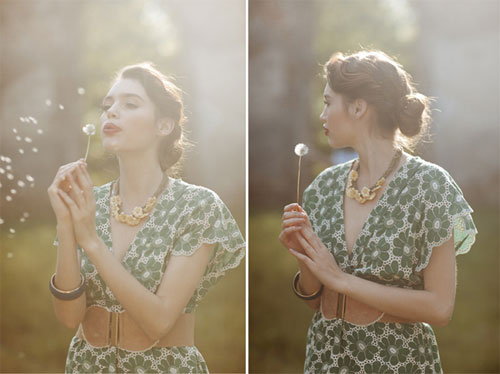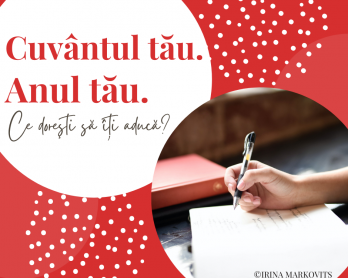Lectura de sambata dimineata
Mai bine mai tarziu decat niciodata, nu-i asa? Serile de vara sunt mult prea frumoase ca sa le petreci in casa, la televizor: licurici, greieri, stele pe un cer indigo, muzica in surdina, vin intr-o frapiera plina de gheata, miros de tei si de trandafiri, o Pavlova delicioasa… Cum sa te trezesti la prima ora?? Eu abia acum in beau cafeaua, cu gandul la papadii si fuste lungi, vaporoase si trec repede in revista, pentru voi, cele mai interesante articole ale saptamanii.


Hussein Chalayan, the man of the moment –“This looks set to be quite a month for the fashion designer Hussein Chalayan, who has long remained under the radar… Tomorrow at Les Arts Decoratifs in Paris, the largest retrospective of his work to date opens to the public.” In The Independent.
Gone global: fashion as art? – “At any given moment there are at least a dozen museums across the world offering major fashion displays — not to mention exhibits in galleries or even department stores… Fashion exhibitions are thus the height of fashion — and omnipresent.” In International Herald Tribune.
India’s not quite on the brandwagon – “The Indian luxury sector represents a dormant volcano for the international marketer who can customise a response that is uniquely Indian. The Indian luxury consumer is evolving rapidly, but…that is inherently different from those in other developing economies.” In Forbes.
The modern apothecaries – „In a world when many cosmetics are mass-produced with mysterious chemicals, these luxury brands (modern apothecary brands) are bottling “authenticity” and the idea of transparency with oils, grains and herbs.” In NY Times.
Tricks of the trade: the clutch – „As clutch handbags come into their own in the summer, when short sleeves make it easy to tuck a clutch under your arm, Nancy Gonzalez explains her tactics for pulling off the look.” In Wall Street Journal.
This old thing…? – „Fast fashion, like fast food, comes at a higher cost than its price tag, so if you avoid eating battery-farmed chicken, why consume the sartorial equivalent?” In The Telegraph.
The new value of being „Made in Britain” – “…The luxury sector as a whole—does indeed seem to be bucking the retail trend… In 2006, British brand Burberry was pilloried for moving its production to China… The brand is increasingly using its British’ness as currency around the world while increasingly looking to the Far East for sales.” In Popsop.
Becoming one of the „relevant” – „Bebe Zeva, the 18-year-old Internet fashion celebrity, recently attended the premiere of a documentary about her.” In NY Times.
Northern discretion: Thomas Persson of Acne Paper – “When Acne Paper was founded in 2004 as a literary prong of the multi-faceted Swedish denim empire, it faced a challenge: having to prove its creative independence, and its worthiness beyond being a fancy bit of advertising.” In Interview.
Summer style for a sunny day in the city – „The summer fashion vote is split along age lines – shorts for teens and colour blocking for adults.” In The Telegraph.
A fashionista’s secret weapon: cheap tops – „The stars of store floors now are colorful, trendy, embellished and under $30. How to find a $3.80 blouse.” In WSJ.
The mystery of the Chinese consumers – “After decades of deprivation and conformism, Chinese consumers regard expensive consumer goods as trophies of success… The owner of a gleaming new BMW will drive around for half an hour to avoid a 50 cent parking fee. And she will hesitate to spend much on interior decoration, because only her family sees the inside of her flat.” In The Economist.
Waiting for Alaïa – „Without doing shows (not since 2003), without advertising or being on Twitter, Azzedine Alaïa has brought the world to him.” In NY Times.
How can jeans cost $300? – “It is an enduring mystery to anyone reared on $50 Levi’s: How can a pair of jeans cost as much as the Phantom, the new look from True Religion that will be priced as high as $375?… The prices of “premium” jeans… Appear to be edging slightly upward after a downturn following the financial crisis.” In Wall Street Journal.
Givenchy: pure is beautiful – “Mr. Tisci’s vision of asking the impossible from his ateliers is part of the story. But the main thread of his collection is the link to those few, rare customers who are searching for the exceptional. And that suddenly seems like 21st century haute couture.” In International Herald Tribune.
Making a statement – „Statement jewellery is one of those overused fashion phrases so familiar that they veer towards the meaningless; but it would be a shame to let this deter us from enjoying the pleasure to be had in big, bold baubles.” In The Telegraph.








Comentarii despre acest post